Invasive Shrubs and Native Alternatives
Fall is a great time of year to spot invasive shrubs on your property. Some species stay greener longer into the fall than our native trees and shrubs, which really helps to make them stand out. Others exhibit flashy fall colors that are very hard to miss. Here is a list of a few invasive shrubs and trees you should consider replacing with natives that look terrific and will provide valuable habitat for wildlife.
Invasive Species:
1. Amur Maple (Acer ginnala)- This invasive maple from Asia can get to be 20 feet tall and is very prolific, out competing native species. It has small, arrow shaped maple leaves that turn brilliant shades of orange and red in the fall. It was introduced as an ornamental for its bright fall colors but has escaped into wild areas.

2. Common Buckthorn (Rhamnus cathartica)- An invasive species from Europe, this shrub can grow up to 30 feet. It has dark green leaves with small teeth and pointy spikes on its branches. The female plants have black berries that are easily spread by birds. This species holds onto its leaves late into fall.
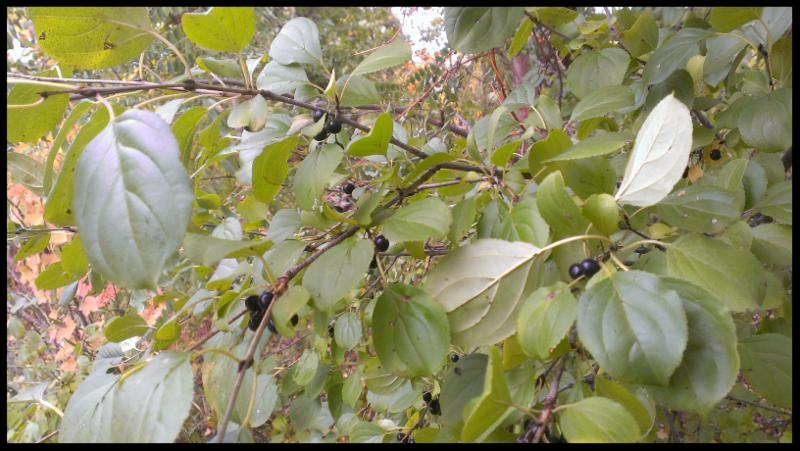
3. Glossy Buckthorn (Frangula alnus)- Another invasive shrub from Europe, this species has a similar growth from to the Common buckthorn but it has glossy leaves and white dots on its bark called lenticels. It does not have thorns like the Common buckthorn but does have red berries that turn black as they ripen.
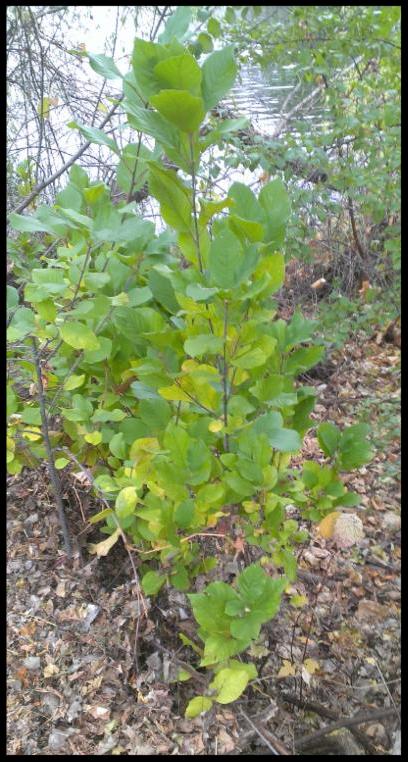
4. Russian Olive (Elaeagnus angustifolia)- Is a species from Europe and Asia that starts off looking shrub-like but can grow as tall as 35 feet. They have leaves that are minty green on the top side and white underneath and have small yellow flowers. They also have branches with sharp thorns that can be up to 2 inches long! This species can move aggressively through landscapes. It is often spotted along roadsides.
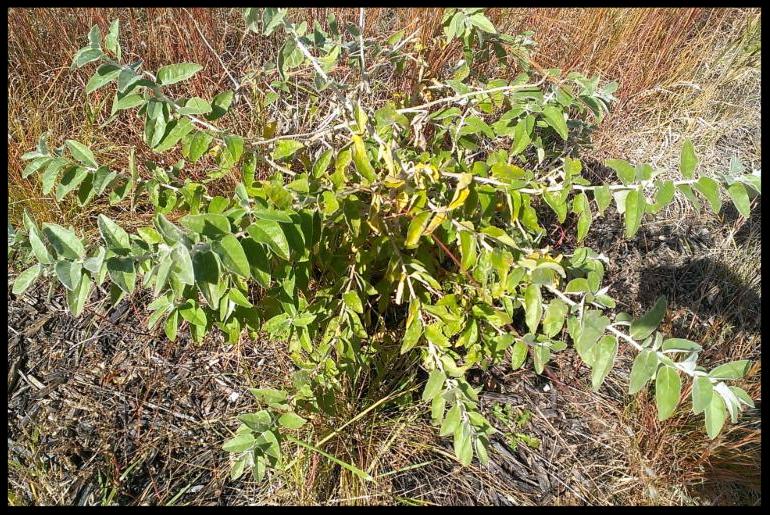
5. Tartarian Honeysuckle (Lonicera tatarica)- This invasive honeysuckle can be very aggressive, especially in rich woodlands. It can grow to 10 feet tall and has light grey bark that looks like it is peeling off. The leaves are blue-green and often bud out early in the spring. It has attractive pink and red flowers that form into red berries. Birds consume the berries and sometimes deposit seed from the air (watch out overhead!).
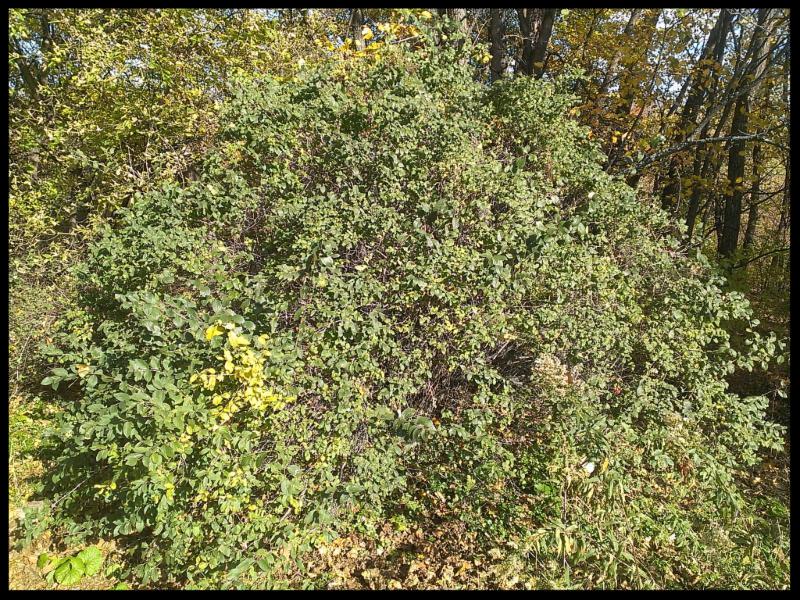
In order to create high quality habitat on your property, these invasive species should be removed. Not only do they pose a risk to your property, plants with berries can become local sources of infestations. So how do you get started? Small shrubs can be removed manually by pulling them out by hand or with a root pulling tool. Large shrubs can be cut close to the ground and then treated with an herbicide to prevent re-sprouting.
Native Shrub Alternatives:
1. Red-osier Dogwood (Cornus sericea)- This shrub grows 3-8 feet tall with stunning red bark that stands out beautifully during the winter months. It has white flowers from May-August and then provides birds with berries during the fall and winter months. This species provides excellent wildlife habitat.
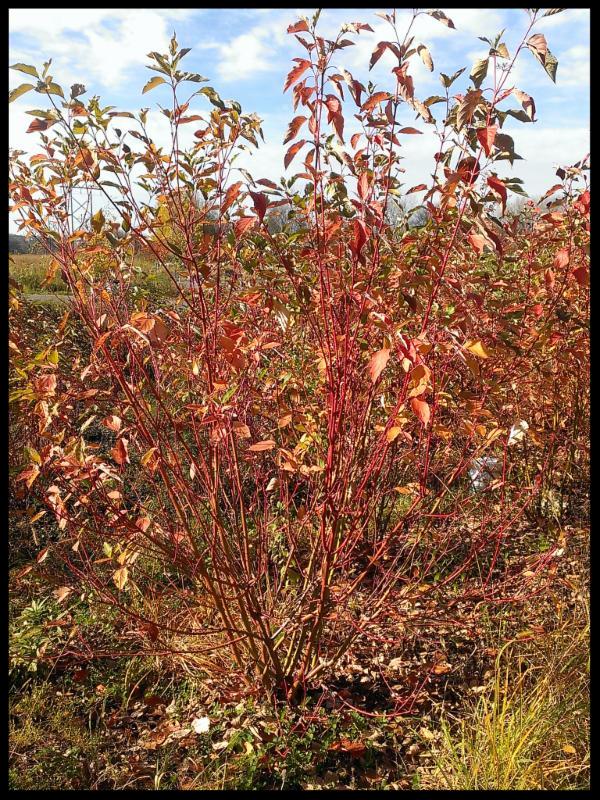
2. High Bush Cranberry (Viburnum trilobum)- This shrub grows to 12 feet tall and has pretty grey bark and white flowers in May. In August they form edible red berries that birds enjoy through the winter!

3. Bush Honeysuckle (Diervilla lonicera)- This is a shorter growing shrub, reaching 1-3 feet tall, with stunning yellow flowers. It blooms from June-July and has attractive dark green leaves that turn into beautiful yellow and red fall colors.
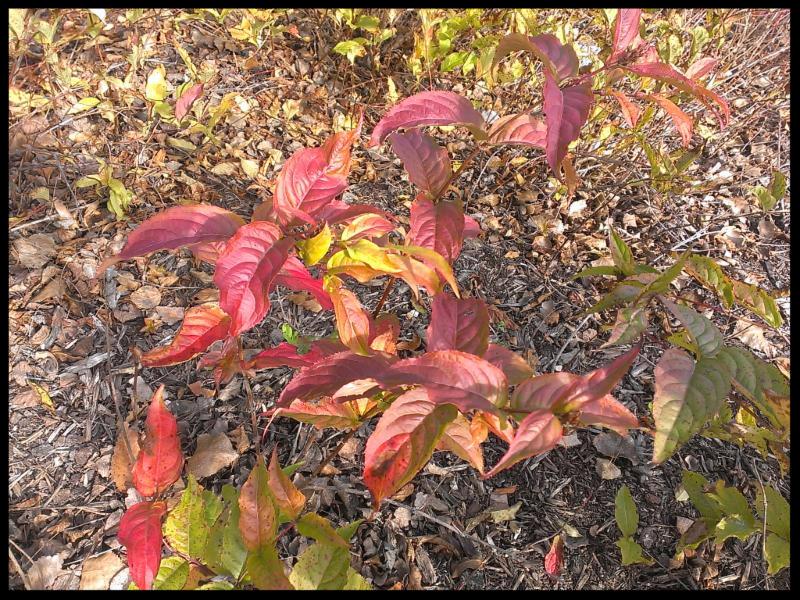
4. Black Chokeberry (Aronia melanocarpa)- This native perennial shrub grows to 4-8 feet and has small white flowers in the spring and small black cherries in the fall. The green leaves also turn a gorgeous red color in the fall!
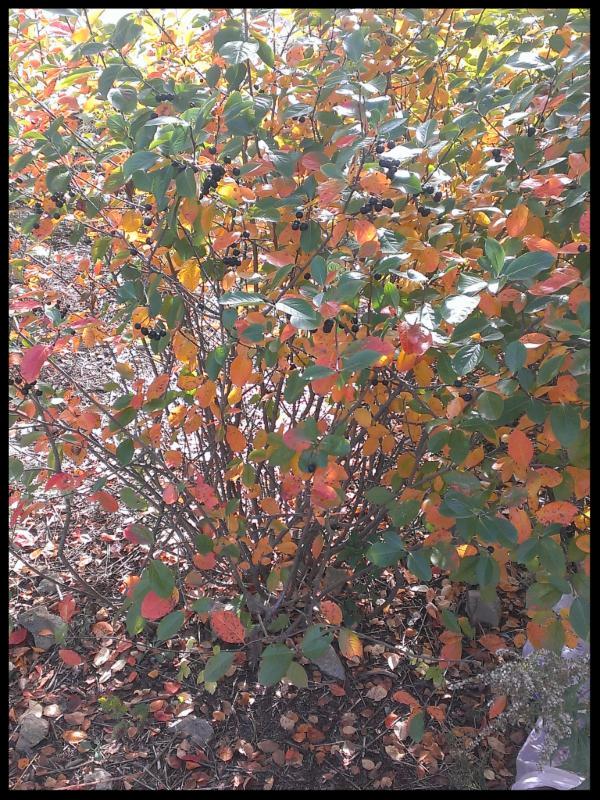
5. False Indigo (Amorpha fruticosa)- False indigo is a smaller shrub that likes wet conditions near shorelines. It grows between 3-12 feet tall depending on site conditions and has wonderful purple spikes of flowers. It is great habitat along shorelines and helps to prevents erosion.
These are just a few suggestions to get your creative juices flowing. Please consider your local site conditions when choosing the most appropriate shrub species for your property. Need help removing invasive plants or putting together a planting plan? Please give us a call to talk to one of our friendly restoration professionals.